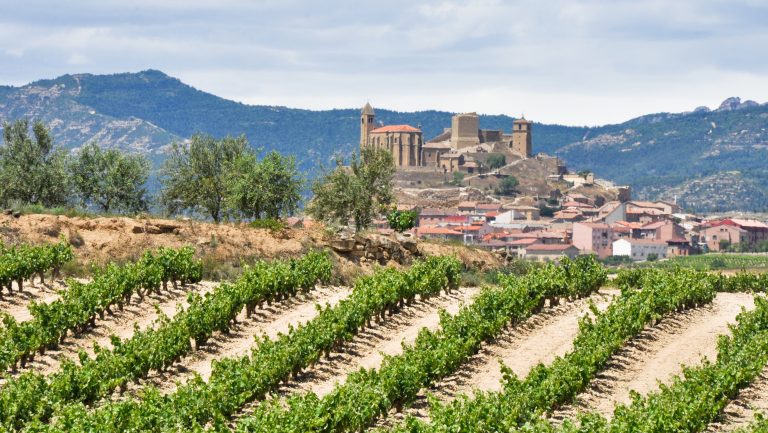The Denominación de Origen Calificada Rioja (Rioja DOC) recently launched its new campaign Saber quién eres (Know who you are) to promote the modern regional focus of the Rioja DOC legislation, which was updated in 2017. The new legislation reflects Rioja’s growing diversity and gives producers more tools to communicate their specific terroirs.
“Rioja is constantly improving, reviewing its definitions, and strengthening what it currently offers with new geographical indications,” says Jose Luis Lapuente, director of the Consejo Regulador DOCa Rioja. “The goal is to highlight the unique origin of the terroir, recognize its diversity, and continue to establish quality requirements that assure the high standard of its wines.”
New Regional Classifications
The new regulations allow wine producers to make their region more identifiable to the consumer, which includes using a larger typeface and taking up more space on the label. Rioja now has three regional categories:

Don’t miss the latest drinks industry news and insights. Sign up for our award-winning newsletters and get insider intel, resources, and trends delivered to your inbox every week.
Viñedos Singulares: This new category sets out to recognize unique single vineyards. To qualify, wines must come from a geographically distinct single vineyard that is registered as a brand and appears on the label. The vineyard can be the property of the producer or a grower (with whom the producer must have a long-standing relationship), and the vineyard must’ve been established for a minimum of 35 years. Yields must be at least 20 percent lower than those permitted for the Rioja DOC; harvest must be manual; and there are heightened traceability checks.
Vinos de Municipio: Effectively Rioja’s Village category, this regulation states that the grapes must come from the village or municipality indicated on the label (with up to 15 percent permitted to come from a neighboring village).
Vinos de Zona: This category covers the labelling of wines from the larger of Rioja’s subregions: Rioja Alta, Rioja Alavesa, and Rioja Oriental (formerly called Rioja Baja). Up to 15 percent of the grapes that feature these subregions on the label can come from a neighboring Zona.
The creation of a Viñedos Singulares category offers a new option for producers but won’t change Rioja wines overnight, explains Guillermo Cruz, head sommelier at Mugaritz in San Sebastian and winner of the 2014 Best Sommelier of Spain competition.
“It’s a different way of classifying wines, strongly focused on single-vineyards,” says Cruz. “The Rioja appellation needed to evolve and it has done [so] in recognizing the value of those single vineyards and Village wines, but it’s important to understand that this is just an alternative way of classifying wines and of widening the space to let the producers evolve through different paths.”
He adds that wines from Rioja have always been blended from different vineyards. “The Rioja appellation is one of the most ancient appellations of Spain, full of history, of a rooted culture that deserves to be preserved,” he says. “And the concept of blending from different vineyards is part of this rooted tradition.”
Varietal White Wines
A 2017 update that breaks from the region’s traditions is the new category of varietal white wines, which includes two international varieties, Chardonnay and Sauvignon Blanc, alongside the Spanish varieties Viura, Malvasía, Garnacha Blanca, Tempranillo Blanco, Maturana Blanca, Turruntés and Verdejo. White Rioja is growing as a category and has seen a 5 percent increase in sales over the last five years, now representing almost 8 percent of annual Rioja sales.
Sparkling Rioja
In the past, any sparkling wine produced in Rioja would’ve been labelled as Cava. A change in Rioja’s regulations last year now enables producers to sell local sparkling wines as Espumosos de Calidad de Rioja, the first of which are expected to be released in 2019. To qualify, the white or rosé wines must be made in the traditional method (second fermentation taking place in the bottle) with a minimum aging period of 15 months (or 24 months for Reserva, and 36 months for Gran Añada). The final alcohol must be between 11% and 13% ABV, and the wines must be approved by a tasting panel.
A Change to Bottle Age
New aging requirements have adjusted bottle aging periods for Reserva and Gran Reserva wines. Effective as of January 1, 2019, Reserva wines will be required to age for 3 years, of which at least 12 months must be in oak and 6 months in bottle (previously there was no bottle aging requirement). Gran Reserva must now be aged a minimum of 5 years, of which at least 24 months must be in oak and 24 months in bottle (down from 36 months), effective now.
“Saber quién eres is a concept that connects Rioja wine with consumers in an approachable manner,” says the Consejo’s marketing director, Ricardo Aguiriano. “It is a concept that captures Rioja’s most intrinsic values including tradition, diversity, and origin.”

Dispatch
Sign up for our award-winning newsletter
Don’t miss the latest drinks industry news and insights—delivered to your inbox every week.
Amanda Barnes is a British wine writer who since 2009 has been based in South America, where she specializes in the wines and regions of Argentina, Chile, Brazil, and Uruguay and writes the South America Wine Guide. Ever footloose, she is currently on a mission to travel Around the World in 80 Harvests.






